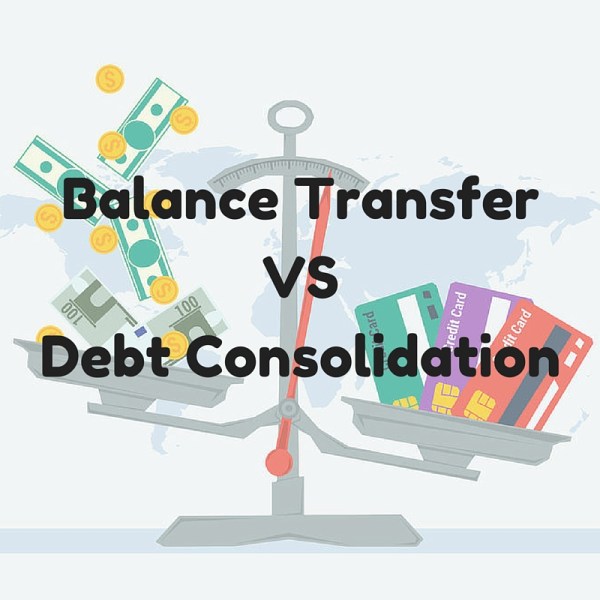Table of Contents
Balance Transfers vs Consolidation Loans – 3 Key Differences
Balance Transfers and Consolidation loans are the last choices of the borrowers to destroy their loans. Paying off loans at the right time with proper interest settlement can save you from getting into deep debts. When people get caught in heavy debts, it is hard for them to pay off everything in a single settlement. In this case, people should consider some alternative ways to escape from their debts and boost their credit scores. Keep reading this article to know more about those options “Balance Transfers and Consolidation Loans” and also understand their key differences.
What Is Credit Card Debt
If you are like most people, you probably did not set out intentionally to build up a giant pile of credit card debt. Credit card debt tends to sneak up on people little by little, all the more so if you are not monitoring your spending properly. Before you know it your credit card debt can mushroom into an expensive problem that can have a horrible impact on your credit scores.
Why Credit Card Debt Hurts Your Credit Scores
Before we cover the 2 different consolidation options previously mentioned and how each one may impact your credit it is important to understand why credit card debt hurts your credit scores in the first place. Credit card debt, unlike other types of debt which may appear on your credit reports, can be harmful to your credit scores even if you make every single payment on time.
FICO’s credit scoring models, the brand most often used by lenders, are designed so that a lot of attention is paid to the credit card debt you carry. More importantly, FICO cares about how your credit card debt relates to your credit card limits. This relationship between balance and limit is known as your revolving utilization ratio. As your revolving utilization ratio climbs your credit scores will begin to take a downward slide.
Pay Off Debts
Naturally, if you can afford to do so then you should pay off your credit card debt immediately and resolve to keep your balances paid off in full each month moving forward. (You do not need to close your credit card accounts – that could be another credit score damaging mistake – but it is fine to lock those cards away and only use them periodically so that the account does not close due to inactivity.)
Challenges In Paying off Debts
However, the truth is that most people who are struggling with a large amount of credit card debt cannot simply afford to wipe that debt out by writing a big check. If you cannot afford to pay off your credit card debt all at once then you can still come up with a debt elimination plan which may ultimately help your credit scores. Balance transfers or consolidation loans might be an effective part of your plan.
Balance Transfers and Consolidation loans
Balance Transfers are the process of transferring a high-interest credit card balance to a low-interest or no-interest credit card. If the users are capable of buying a low-interest credit card, they can buy and transfer the balance of other cards to this one or the existing lower-interest credit cards. So that users can pay off their debts with lower interest or no interest. Whereas debt consolidation is the process of taking one loan to pay off all the other loans. People can consolidate all the loans into one loan so that they can borrow loan interest loans and pay off others.
Balance Transfers
Balance transfers offer you a way to combine all of your outstanding credit card balances onto a single credit card account. Typically balance transfer offers to boast a low or even 0% introductory interest rate (assuming your credit scores are high enough to qualify) which can potentially save you a lot of money that would be otherwise wasted on high-interest fees. A balance transfer fee of 2%-5% or higher is typically charged as well, so be sure to keep that in mind when you are doing the math to make sure that a balance transfer will benefit you financially.
Credit scoring models care about the revolving utilization ratio on each of your credit card accounts individually as well as on all of your accounts combined. When you transfer multiple outstanding credit card balances onto a single credit card account (either new or existing) you can reduce both your number of accounts with balances and also your revolving utilization ratios on several different credit cards. Your aggregate revolving utilization ratio may remain roughly the same, but you will likely see at least some credit score benefit by combining multiple outstanding balances into one.
Consolidation Loans
Many banks and credit unions offer personal loans that consumers with good credit can use to pay off expensive, outstanding credit card debt. These consolidation loans are typically installment accounts which are treated much differently than revolving debt by credit scoring models. By using an installment loan to eliminate credit card balances your revolving utilization ratios (both individually and in aggregate) would drop to 0% – a great move from a credit score perspective.
Keep in mind that the interest rates offered on consolidation loans typically cannot compete with the low or perhaps 0% rates you may sometimes receive as part of a balance transfer offer. However, the credit score benefit which accompanies using an installment loan to pay off revolving debt is often significant.
Difference Between Balance Transfers and Consolidation Loans
Balance Transfers | Consolidation Loans | |
Definition | Process of transferring from one or more cards to another | Process of combining many loans into a single one. |
| Major Focus | Transferring the balance. | Combining the loans |
Who can take |
|
|
Who can not |
|
|
Beware of Temptation
Whether you use a balance transfer or a consolidation loan to pay off your credit card debt you should be cautious with your future spending habits. You will have to discipline yourself not to be charging up credit card debt again after a consolidation or transfer, otherwise, you could find yourself in some seriously hot water in the future. Once your credit card accounts are paid off you need to commit to only charging what you can afford to pay off in full each month moving forward.
Frequently Asked Questions
What are the possible ways to destroy debt?
Paying off loans at right time is the simplest way to escape from debts. But, usually, it is hard to pay off high amounts of debts. When people are capable of paying off their loans altogether they have two options, balance transfers, and consolidation loans. They have to go with one of them.
What are consolidation loans?
Customers can combine the loans into a single one and pay them off by borrowing one loan with lower interest. This might reduce the number of settlements to do.
Are balance transfers and consolidation loans worth it?
There is no option for borrowers to escape from paying the loan amount. The only thing is that these balance transfers and consolidation loans can reduce their burden of dealing with multiple loans and high interests loans.



